Scotland 2022 |
|
The first week of March, the whole family packed up and headed across the pond to Scotland. We had planned on taking
a nice family trip after Colin graduated, to celebrate the boys being out of high school. The pandemic made overseas
travel difficult, so we had to put our plans on hold for about a year. Postponing the trip allowed us to also celebrate
our 25th wedding anniversary.
We had a great time and are glad the boys were able to have this experience. Here are some interesting observations made on our trip:
| ||
| Edinburgh | ||
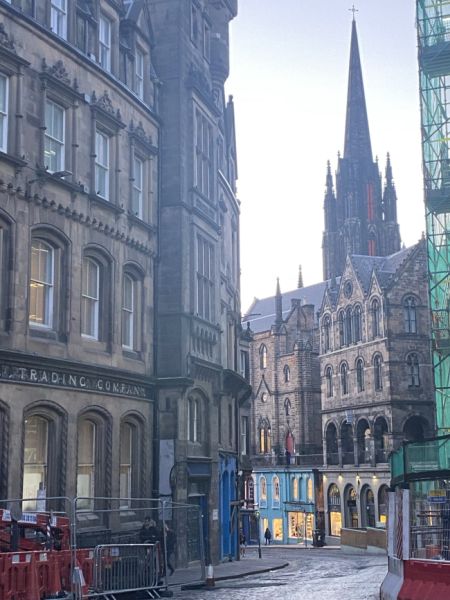 |
||
| We spent our first two days in Edinburgh. There is SO much to see and do in this capital of Scotland. What I liked most about Edinburgh was the architectural charm of the city. This is real old-world flare and design. Much of JK Rowling's inspiration and novel writing of the Harry Potter series came from this city, and her set design for Diagon Alley was inspired by Victoria Street, pictured above. | ||
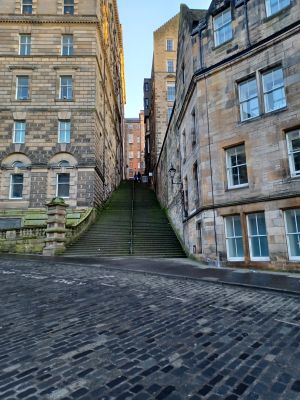 |
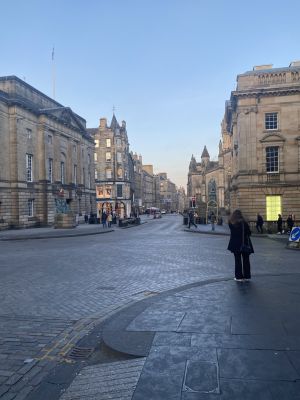 |
|
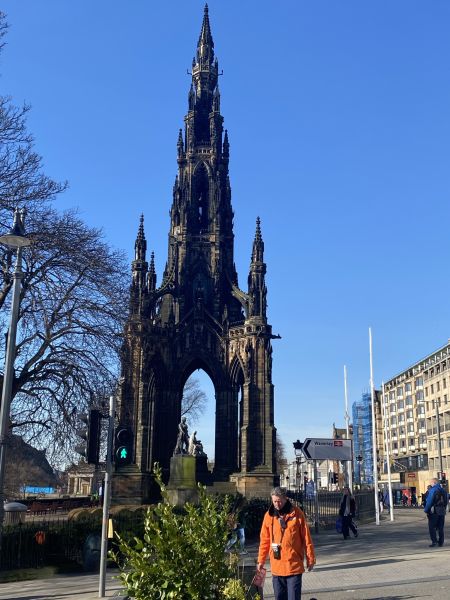 |
||
| This is Scott Monument, a memorial to the Scottish author, Sir Walter Scott. This monument came at a cost to the "hewing" masons involved with the carvings and statues within the monument. Breathing in the fine dust created during the carving process made these masons prone to phthsis (silico-tuberculosis). Half of the masons employed to construct this monument died from this. | ||
|
Although telephone booths may be considered passè, these iconic red boxes are still in service in the UK. Due to
new regulations, if a phone box is utilized 52 times in a 12-month period, it will remain active. In some cases, they
may be used in emergencies when a cellphone may not have good reception. If a kiosk is located in an area considered
high frequency for accidents, it cannot be removed. Out-of-service booths have been adopted by communities and repurposed as lending libraries, defibrillator units and art galleries. |
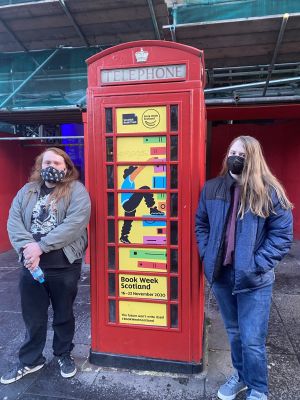 |
|
| Greyfriars Kirkyard and Vaults | ||
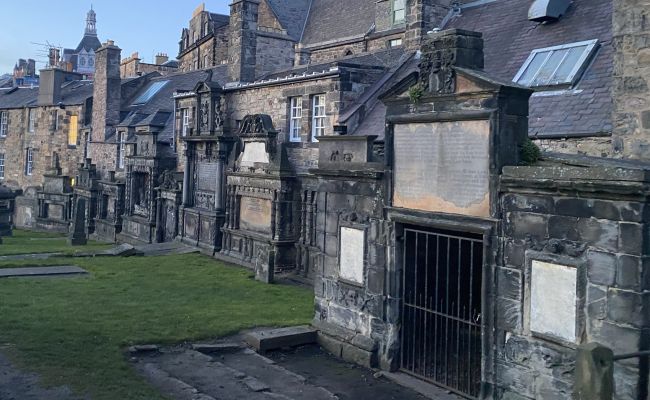 |
||
| On our first night in Edinburgh, we went on a haunted graveyard and vault tour. Greyfriars Kirkyard is considered the most haunted graveyard in the world. The cemetery ground is higher than the street because it's stacked with upwards of 500,000 bodies. And the topsoil is so thin that bones will occasionally pop up to the surface. | ||
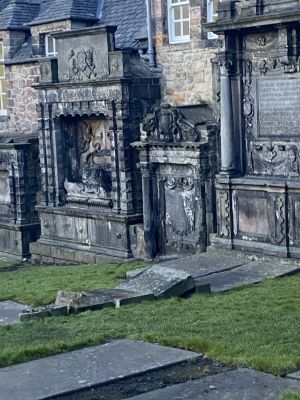 |
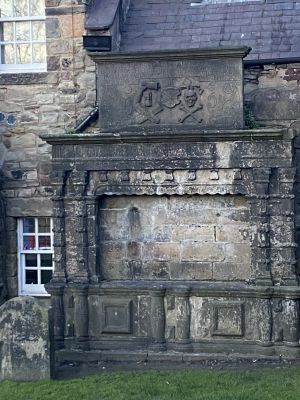 |
|
|
In the 1800s, grave robbers were paid as much as £10 per body by the hospital for use as cadavers. This was equivalent
to 1-2 months wages back then, or over $1,000 today. Relatives used to watch over freshly buried graves for 3 days to protect their departed ones from grave robbers. After 3 days, the bodies were no longer suitable to be used for research. If you Google "Burke and Hare", you will find an interesting history of these two infamous Edinburgh grave robbers / murderers. | ||
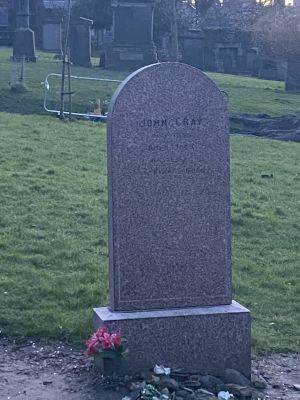 |
 |
|
|
John Gray (tombstone pictured above) was a night watchman who patrolled the streets of Edinburgh in the mid 1800s. During the last two years of
his life, he acquired a companion, a Skye Terrier named Bobby. The two were a well known pair who regularly ate
together and walked the beat together. John succumbed to tuberculosis and was buried in Greyfriars in 1858. Bobby was in John's funeral procession and thereafter guarded his grave. The only time he would leave was at the sound of the city's one o'clock gun. This was his signal to go to the coffee house to receive his free meal; a routine he and John shared. The public took care of Bobby, bringing him food and other comforts. Many attempts were taken at evicting Bobby from Greyfriars, but to no avail. The groundskeeper finally gave up and provided him a shelter at John's grave. He stood vigil util his own death, 14 years later. Because the graveyard is hallowed grounds, Bobby was buried just outside the gate in an undisclosed location. A statue and fountain were erected in honor of Bobby. | ||
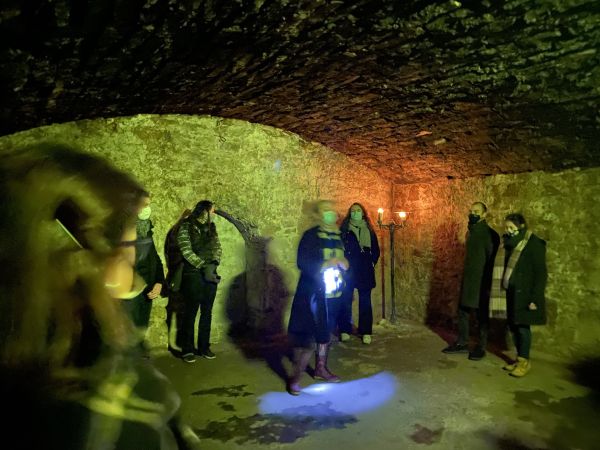 |
||
| The vaults in old town Edinburgh were originally used for businesses such as pubs and workshops for cobblers. Years later, they became a place for illegal gambling, whiskey distilling, and shelter for the homeless. Due to the poor air quality and dampness, as the city rain water slowly crept through the stone ceilings, they were eventually abandoned by businesses, and the city's poorest moved in. The vaults were a dangerous place, where hoards of people would cram into these dimly lit spaces, falling victim to theft, rape and murder. | ||
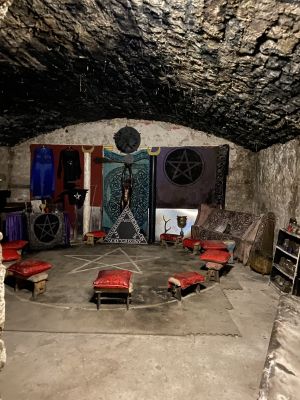 |
One of the vaults has an authentic Wiccan Coven. This vault has been inactive since the death of the High Priest George Cameron (The Hermit). But it remains as a time capsule with the alter set for ritual. | |
| Another vault contains a stone circle, placed there by a coven of witches in order to contain a dark spirit. It is said that you should never enter the circle as you may be cursed with bad luck... but we did. Napoleon Dynamite's wizards cast a spell of protection on us, so we were safe. | 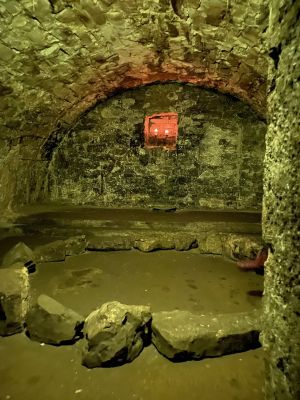 |
|
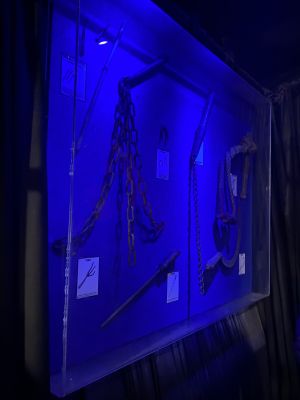 |
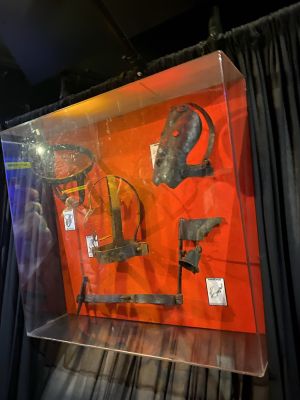 |
|
| At the end of the tour, we returned to a museum of torture devices. This was much more convincing than the old wooden spoon of our days. Torture was officially abolished in 1640. | ||
| Edinburgh Castle | ||
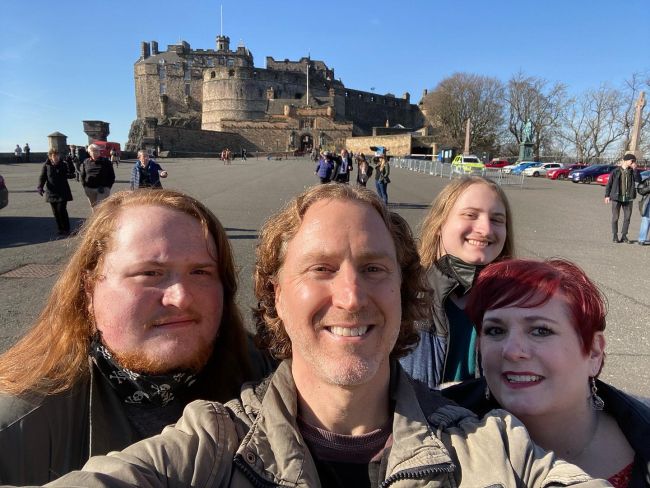 |
||
| Edinburgh Castle was built on a volcanic crag called Castle Rock. Over the centuries, Castle Rock has had many inhabitants who have built their fortresses atop this high ground, which overlooks the city of Edinburgh. | ||
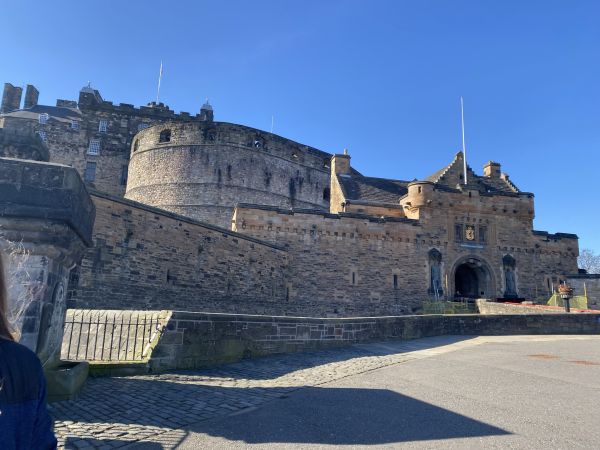 |
||
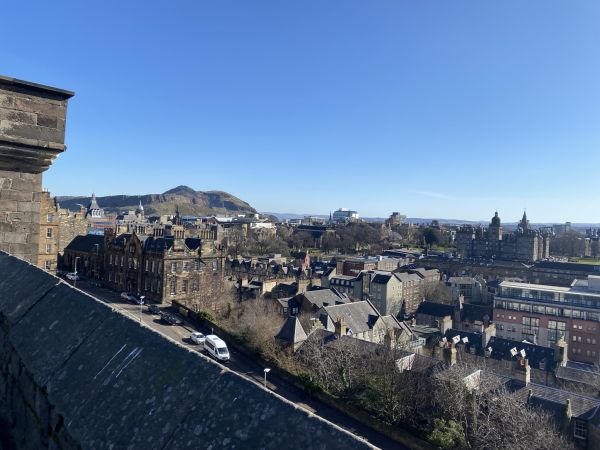 |
||
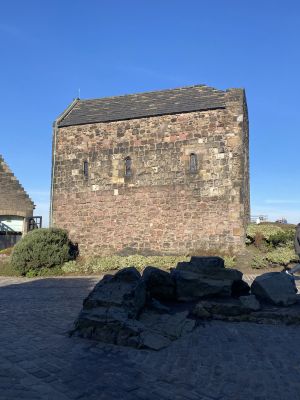 |
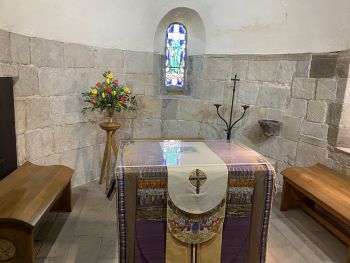 |
|
| The oldest surviving building on the grounds (and in Edinburgh) is St. Margaret's Chapel, which was built in the early 12th century. To this day, weddings and christenings are still performed in this chapel. | ||
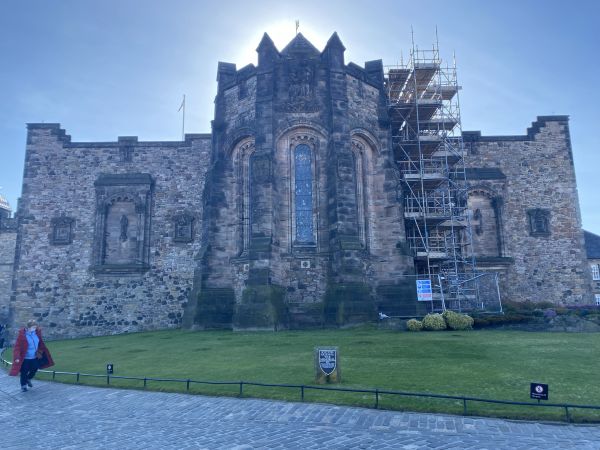 |
||
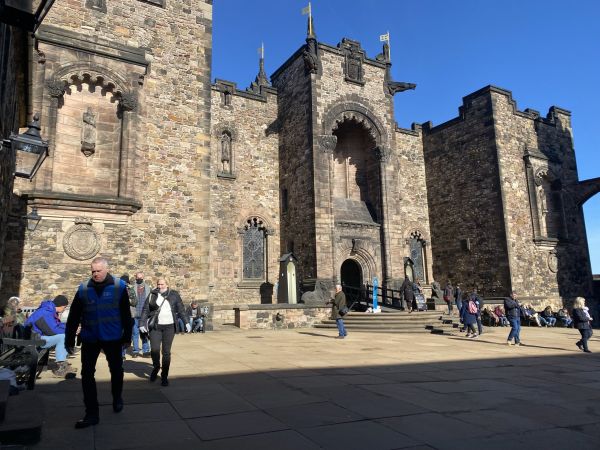 |
||
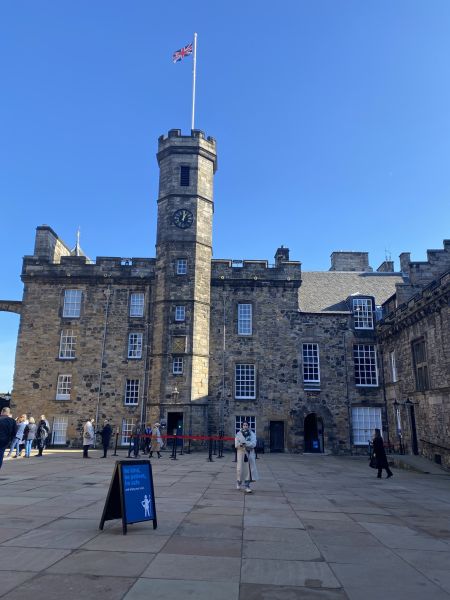 |
||
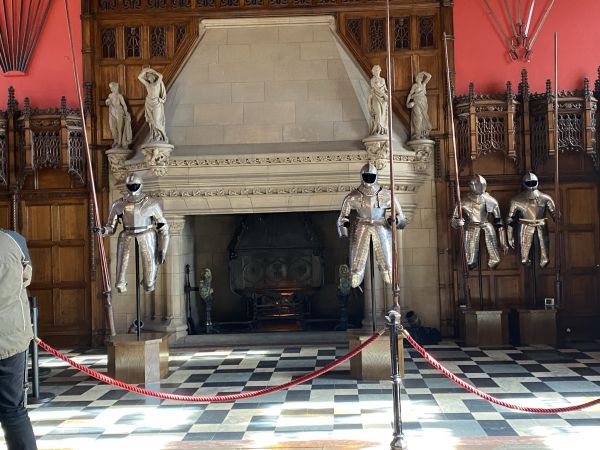 |
||
| Construction of the Great Hall was completed in 1511 for King James IV. Unfortunately, he was only able to enjoy the banquets and royal ceremonies that took place in this establishment for a couple of years. He was killed by his brother-in-law, King Henry VIII, in 1513. | ||
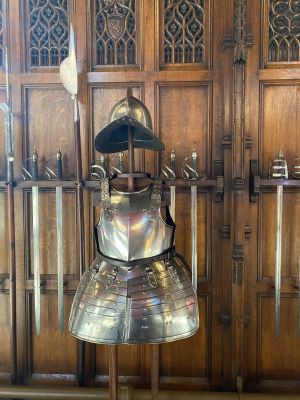 |
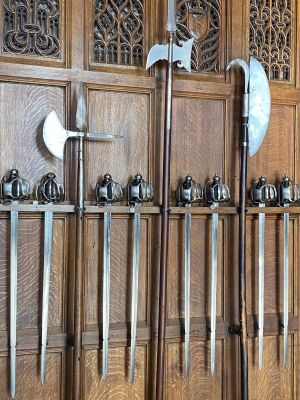 |
|
| Today, the Great Hall displays a history of armour and weaponry through the ages, such as spears, spikes, cavalry swords, and the most feared weapon, the Lochaber axe (pictured far right). This pole-mounted weapon consisted of a long blade used to spear and chop, and an opposing hook used to unseat enemies from their mounts. | ||
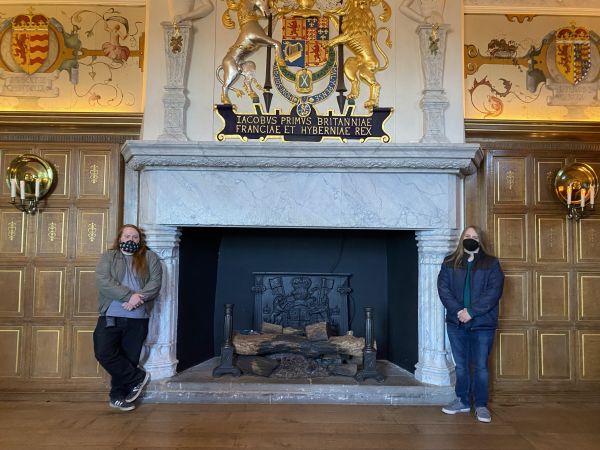 |
||
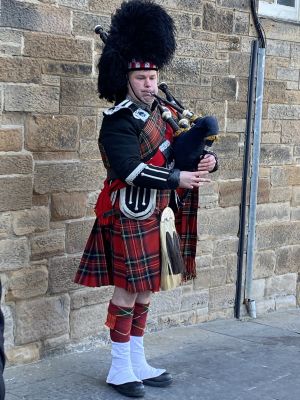 |
After leaving the castle and beginning our descent down the Royal Mile, we stopped to listen to a Scotsman play the bagpipes. People offered him tips for his entertainment. | |
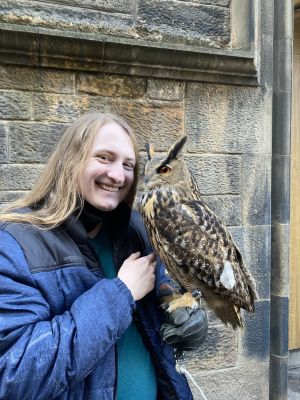 |
 |
|
| We also had an opportunity to hold a long-eared owl. The owners requested a donation of £5 each. | ||
 |
 |
|
| Palace of Holyroodhouse | ||
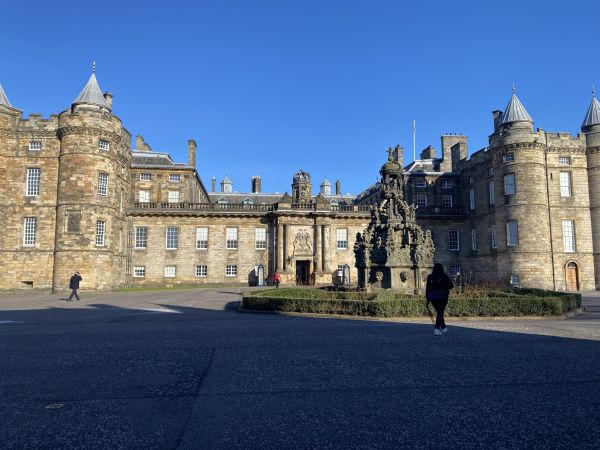 |
||
| The Palace of Holyroodhouse is located at the bottom of the Royal Mile, with Edinburgh Castle sitting at the top. This is the home of Scottish royalty, and the Queen's official residence in Edinburgh. The Queen actually stays here for one week each year while attending meetings. | ||
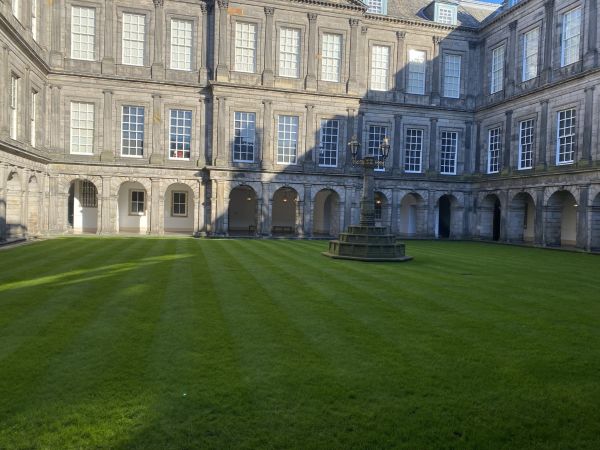 |
||
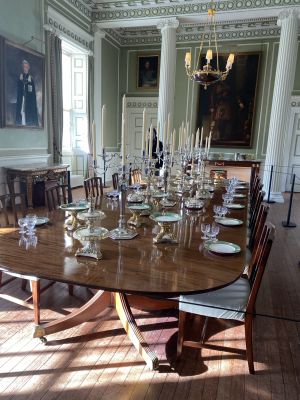 |
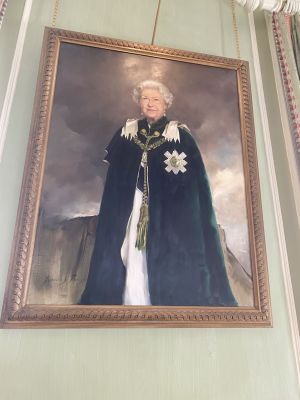 |
|
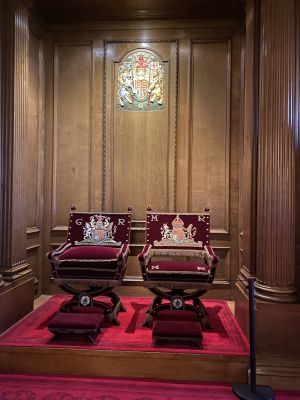 |
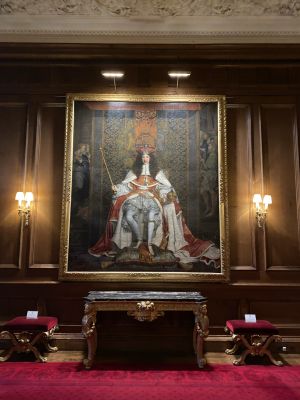 |
|
| Previously used in 1822 by King George IV as the Guard Hall, the Throne Room is used today to host events such as luncheons for Knights and Ladies of the Order of the Thistle. The Order of the Thistle, founded in 1687, is the greatest order of chivalry in Scotland. It consists of the Sovereign (The Queen) and sixteen Knights and Ladies. Pictured below are the Badge and Collar of the Order of the Thistle. | ||
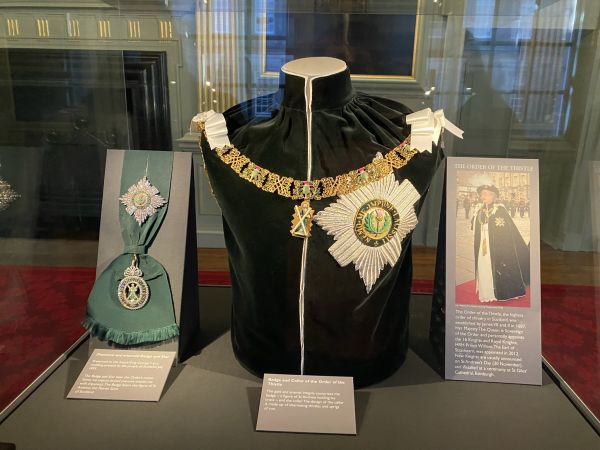 |
||
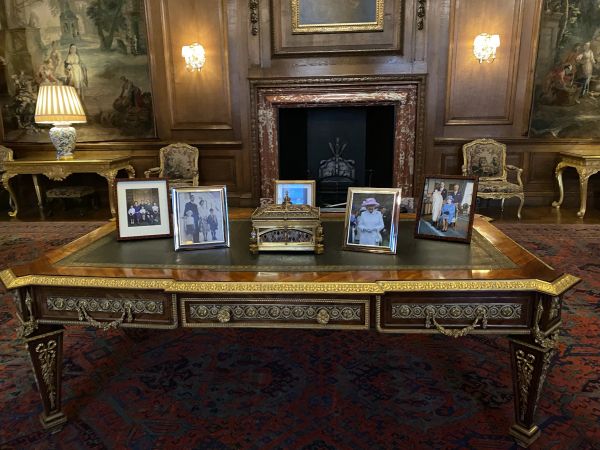 |
||
| Pictures of the Royal Family on display on a table within the palace. | ||
| Queen Victoria's tartan dress (circa 1835). | 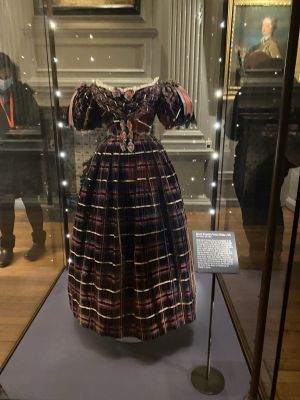 |
|
| Falkland | ||
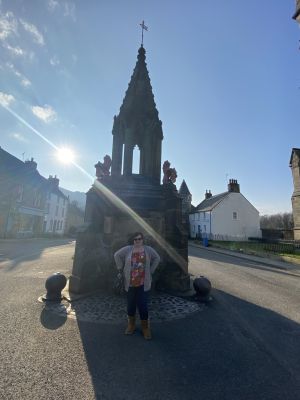 |
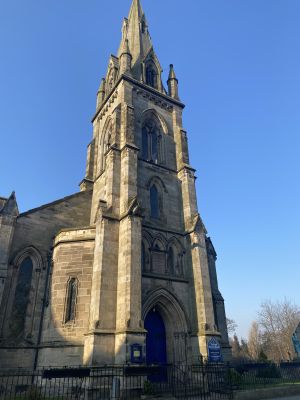 |
|
| After our first two days in Edinburgh, we collected our rental car and headed up north to Inverness. Along the way, we made a stop in Falkland to visit one of the sites Outlander uses to portray the city of Inverness. Since the show Outlander blends historical facts with fan fiction and romance, many of the places we visited were of historical significance as well as filming locations. | ||
| The Highlands | ||
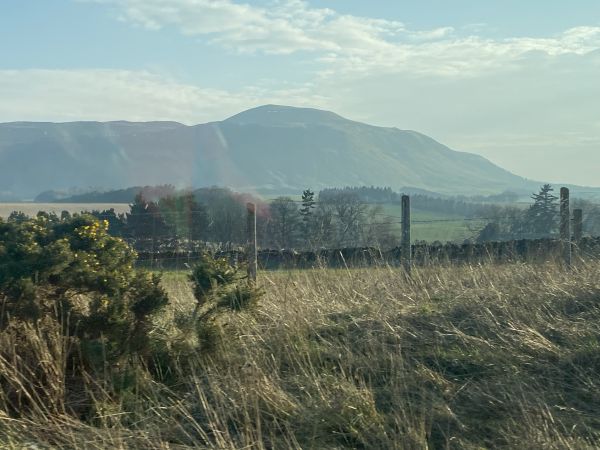 |
||
| As we made our way up to Inverness (about a 3 hour drive from Edinburgh), we passed through the Highlands. This region of north and western Scotland saw a rise in population between the 18th and early 19th century. The social majority of the Highlands consisted of clans. The Highlands were often referred to as a lawless region; an outpouring of Gaelic Ireland. The population has been in steady decline since the mid 1800s due to emigration to the US, Canada, Australia and more industrial and densely populated areas of Scotland and England. This massive area of Scotland now makes up only 14% of Scotland's total population. | ||
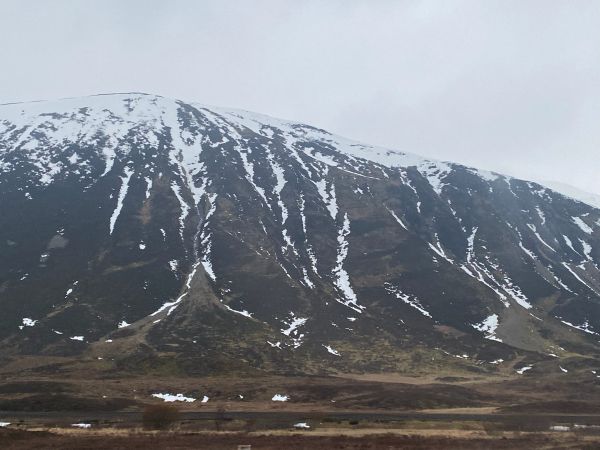 |
||
| Containing the UK's highest elevations, it's not uncommon to see snow-capped mountains as you make your way through the Highlands. | ||
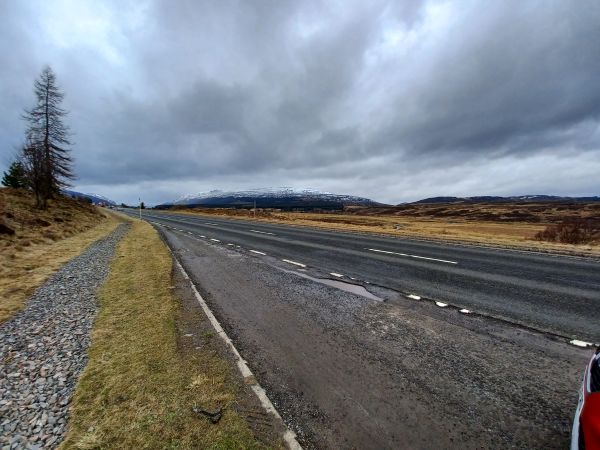 |
||
| Culloden | ||
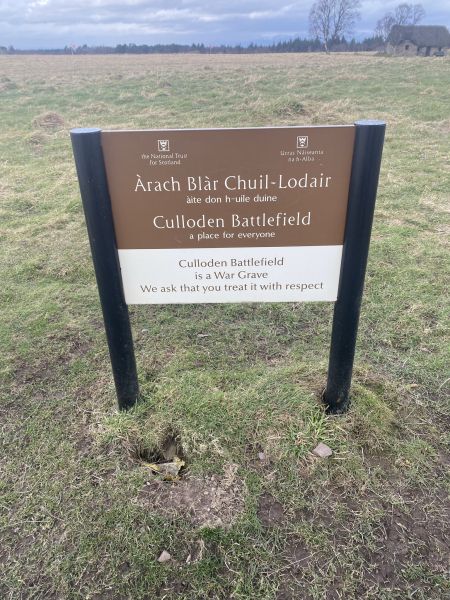 |
||
|
The Battle of Culloden was considered the final confrontation between the Scottish Jacobites and the
British Army, fought on April 16th, 1746. The Jacobites were those who fought to restore the Stuart
dynasty to its rightful British throne. A brief history on that... The crown had been passed down to a Stuart, but not by way of the traditional male blood line. This was through a culmination of events beginning with a decision that all future monarchs be Protestant. When James VII died, the crown was passed down to his daughter Anne, who was Protestant -- even though he had a son, James Francis, who was Catholic. When Anne died, the crown was passed down to the next Protestant Stuart, who was her cousin, but was a Stuart through the female blood line. James Francis wanted to claim the throne and restore its natural succesion. Many Scottish, English and Irish Protestant and Catholic families felt that having a rightful heir return to the throne would suit them better, so began the Jacobite uprising. Rebellions broke out in the early 1700s in support of James Francis Stuart. Eventually, his son, Charles Edward Stuart, claimed the throne and continued the good fight. They had many successes and defeats up to that fateful April morning on Culloden Battlefield. Prince Charles insisted his hungry and tired men walk to Nairn to engage in a surprise attack on the Duke during his birthday celebration, thinking they would catch him and his men off guard. They arrived so late, that the sun was already up and they had to return to the original battle location. Exhausted, outnumbered and outmounted, over 1200 Jacobites lost their lives in under an hour. Sadly, because there was a mix of those who supported the cause, and those who didn't, many clans who fought were fighting their own brothers, fathers and uncles. Evading capture for months, with a £30,000 bounty on his life, Prince Charles managed to traverse the Highlands and islands of Scotland. He was eventually picked up on the west coast by a French Naval ship and died an old man 41 years later in Rome, never have setting foot on Scottish soil again. | ||
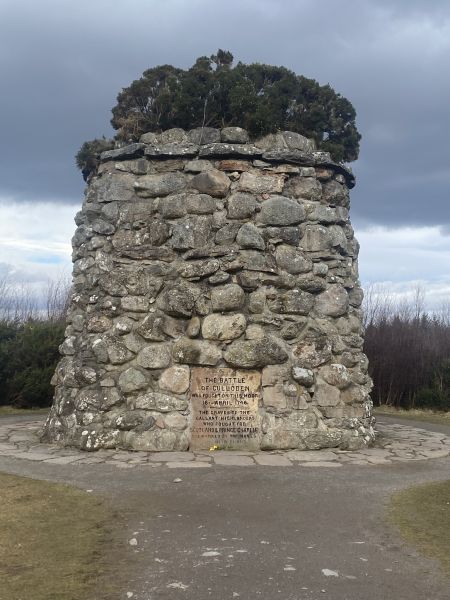 |
||
 |
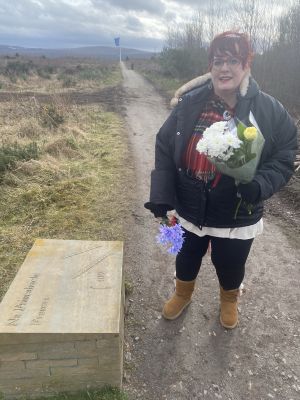 |
|
| We placed flowers at the clan memorial markers. We were able to find Stuart markers for my family, but didn't see the Gordon clan markers for Steffanie's family line. So she placed flowers by the Fraser clan. | ||
 |
||
| Steffanie took this cool panoramic picture of the battlefield, with the boys seen at right. The straightline bitter-cold winds that whip through this flat landscape just cut right through you. You can tell this was our first time here, as others who were visiting wore stocking caps to keep warm and hold their hair. The video I took out here is barely audible due to the persistent whistling winds. | ||
| Clava Cairns | ||
 |
||
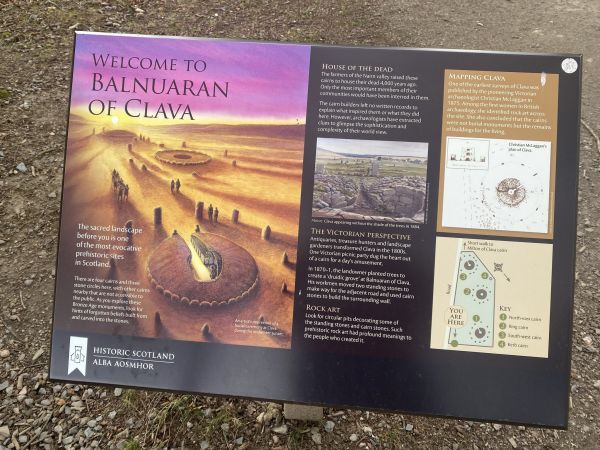 |
||
| Clava Cairns, or tombs (clairns) of Balnuaran of Clava, are a group of three large circular burial sites dating back over 4,000 years. The stones were built around the sun, and it's believed they were used to praise the solstice and equinox. | ||
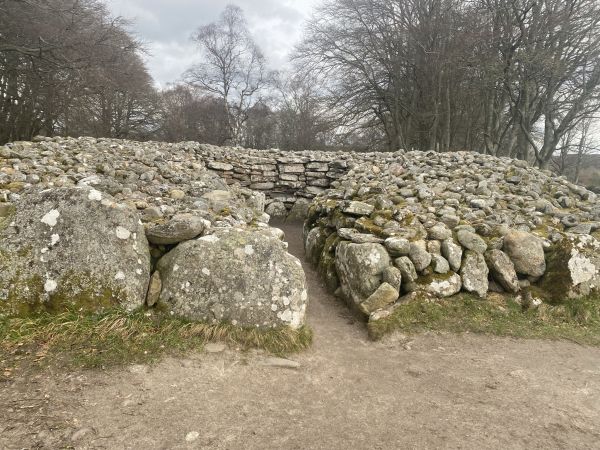 |
||
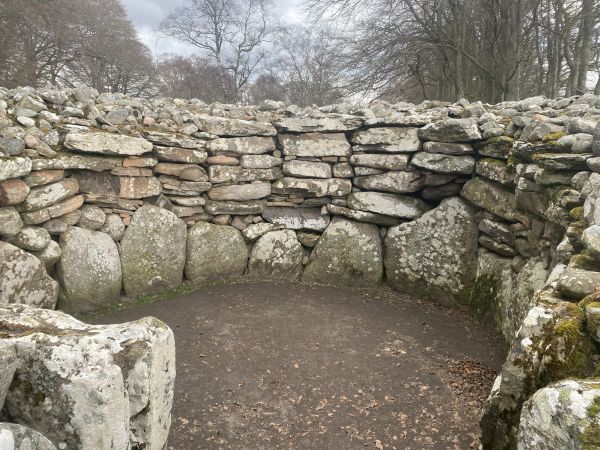 |
||
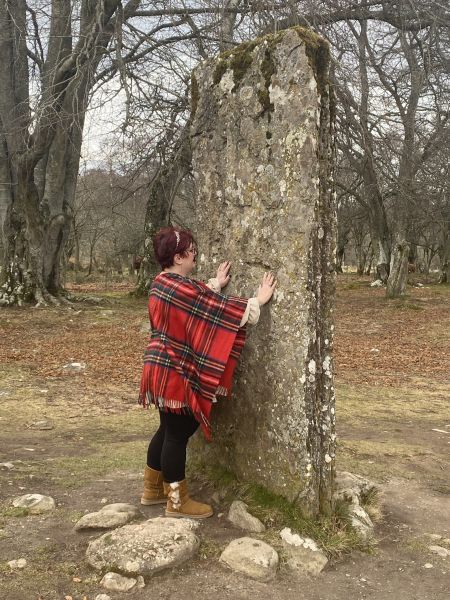 |
||
| For Outlander fans, this is the closest thing you'll find in the area to the standing stones depicted in the series. The show's stones were constructed of styrofoam, and were modeled after the actual Callanish standing stones, located on the Isle of Lewis in Scotland's archipelago. | ||
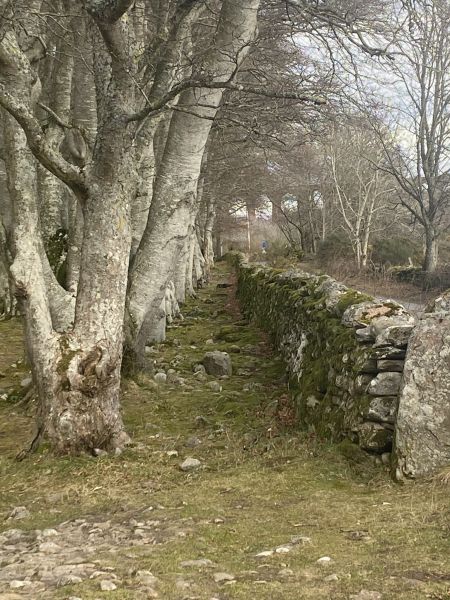 |
||
| This picture was taken along the stone wall that lines the road neighboring the cairns. One of my most favorite scenic pictures of our trip. | ||
| Loch Ness | ||
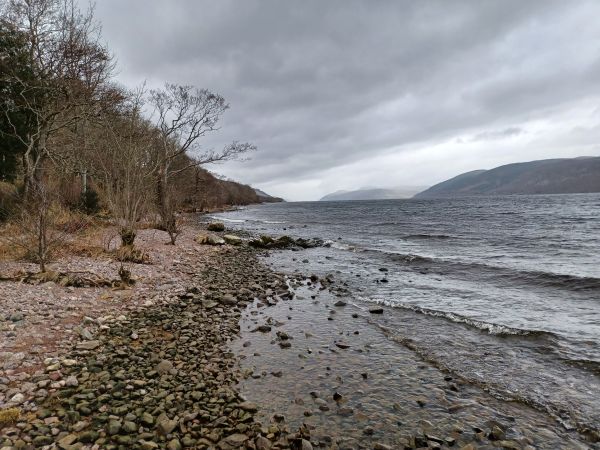 |
||
| Nobody can visit Inverness and NOT visit Loch Ness! We drove to Dores beach, about a 20 minute trip from our most favorite Bed and Breakfast, The Acorn House in Inverness. | ||
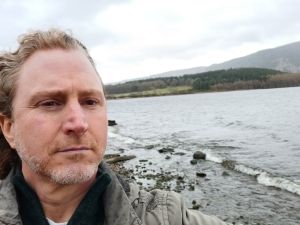 |
It took me a moment to soak in the reality of actually standing on the banks of Loch Ness. As a boy, I obsessed over the Loch Ness monster and all of the sitings, stories and pursuits of hunting down this prehistoric beast that inhabits the freezing cold waters of Loch Ness. | |
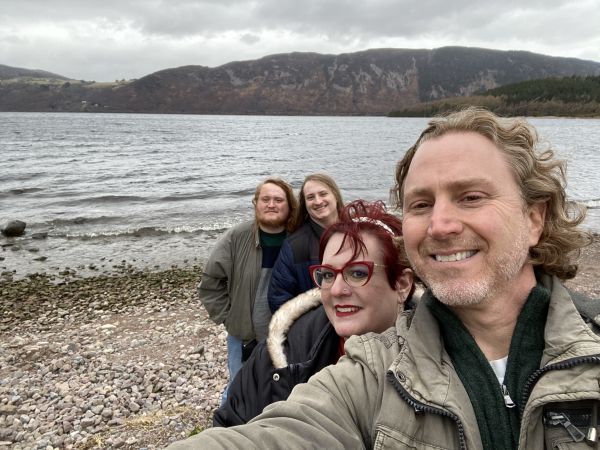 |
||
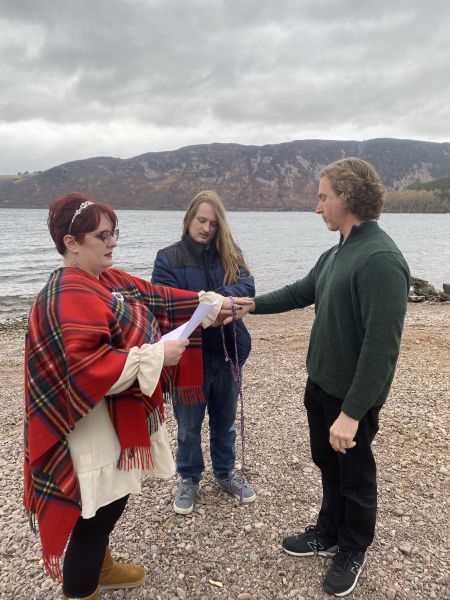 |
||
|
Steffanie planned a handfasting ceremony for us to renew our marital commitment as part of
our 25th anniversary. Colin tied the rope around our hands as part of the ceremony while Liam took pictures. Handfasting is a Celtic tradition often used as an engagement that would last one year and one day. At which point, a couple would return to a priest to get officially married. In the ceremony, couples join hands and a third person ties a braided rope (or tartan) over both hands. The couple each take an end of the rope, slip their hands out and pull the rope into an infinity knot. The origin of "tying the knot" comes from handfasting. During our ceremony, Steffanie read me a love poem by Louis de Bernières: "Love is a temporary madness, it erupts like volcanoes and then subsides. And when it subsides you have to make a decision. You have to work out whether your roots have so entwined together that it is inconceivable that you should ever part. Because this is what love is. Love is not breathlessness, it is not excitement, it is not the promulgation of promises of eternal passion. That is just being in love, which any fool can do. Love itself is what is left over when being in love has burned away, and this is both an art and a fortunate accident. Those that truly love have roots that grow towards each other underground, and, when all the pretty blossoms have fallen from their branches, they find that they are one tree and not two." | ||
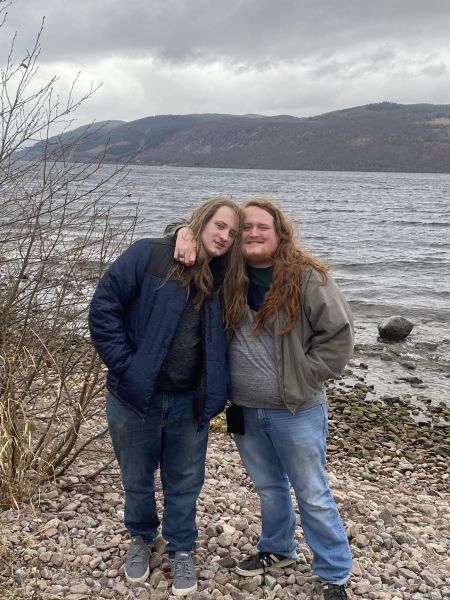 |
||
| Linlithgow | ||
| After our visit in Inverness, we returned south to the Edinburgh area to a place called Linlithgow. I don't really have any good pictures of the town, although it was quaint. However, we did find a really good place to eat, which was attached to a hotel. | ||
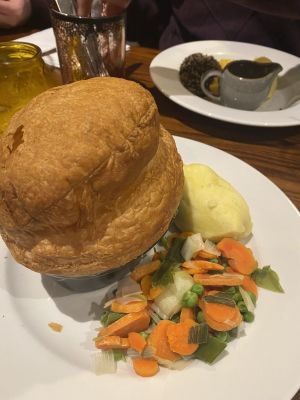 |
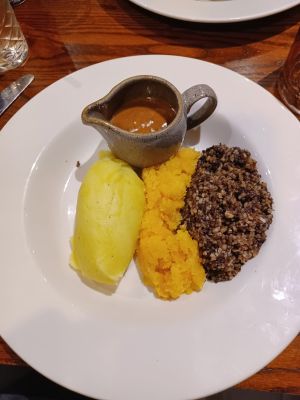 |
|
| Steffanie had a beef pot pie type of meal, with a blooming loaf ballooning over the top of the dish. I ordered haggis, turnips and potatoes. I tried the boys' haggis on their nachos in Edinburgh, but wanted to try it again as a meal. Haggis (sheep innards) is a popular Scottish dish, but was banned in the US in 1971 because of the risk that gastrointestinal fluid might leak into their lungs during the slaughtering process, raising the likelihood of food-borne illness. I would describe the taste of haggis to be like sausage. And if you served it to anyone and didn't tell them what it was, most people would enjoy it. | ||
| Doune Castle | ||
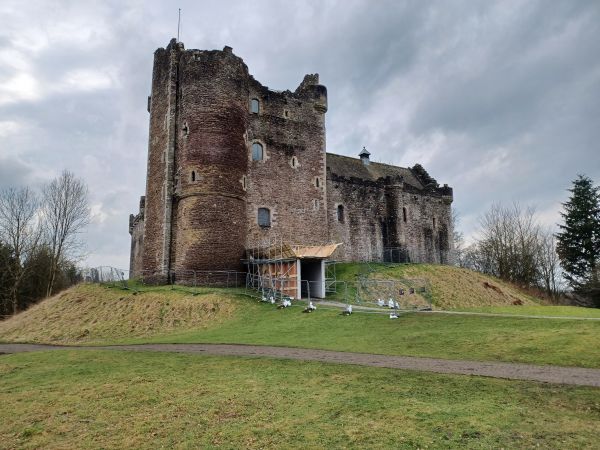 |
||
| Doune Castle was closed for renovations while we were there. This castle was built in the 13th century and was rebuilt in the late 14th century after being heavily damaged during the Scottish Wars of Independence. The castle has held many purposes throughout the years including being used as a royal residence, hunting lodge and later, a military stronghold in the 17th and 18th century during the Jacobite uprising. | ||
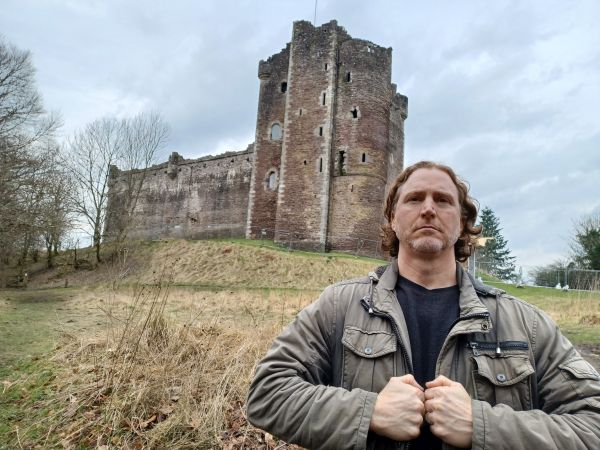 |
||
| This castle has also been a filming location for many productions such as Outlander, Game of Thrones, and one of my favorites, Monty Python and the Holy Grail. I didn't realize until the day before we were to visit here, that this was the castle where they filmed this classic. So I was totally geeking out when we got here. | ||
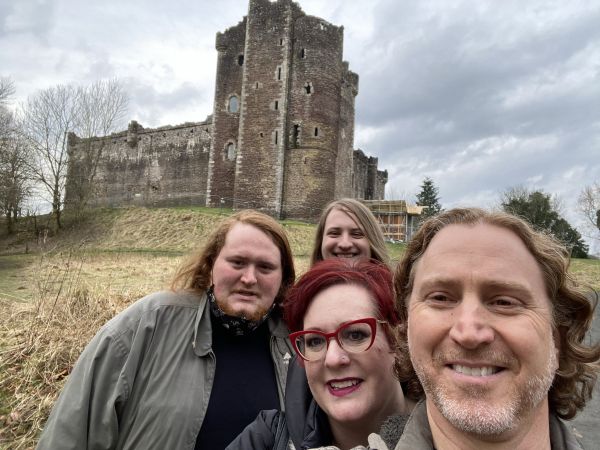 |
||
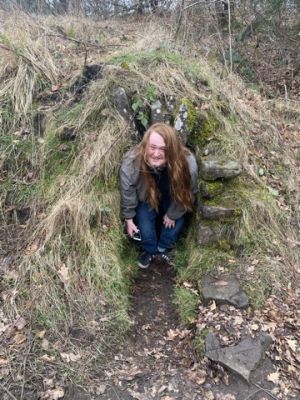 |
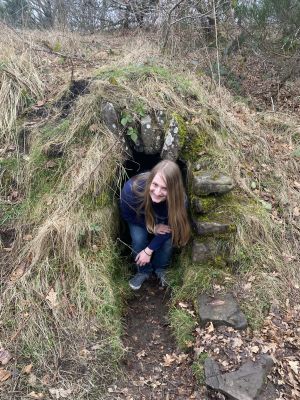 |
|
| We found this "Hobbit" hole on the grounds, but weren't really sure what it was for. It was a tunnel that exited not far from the entrance, but the exit was too small (and muddy) to crawl out of. It was still fun to crawl into. | ||
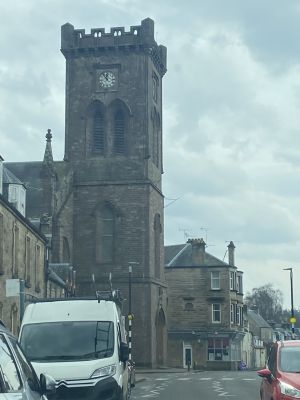 |
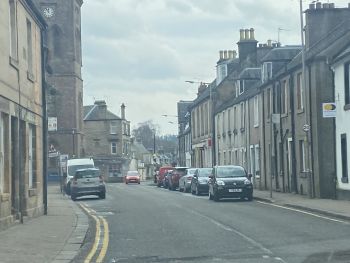 |
|
| Doune was a cute village to drive around in. We did make an unplanned stop at the Deanston whiskey distillery and were able to have a brief whiskey tasting. The boys enjoyed that opportunity and each bought a small sample pack to bring back to the US and enjoy on their 21st birthdays. | ||
| Midhope Castle | ||
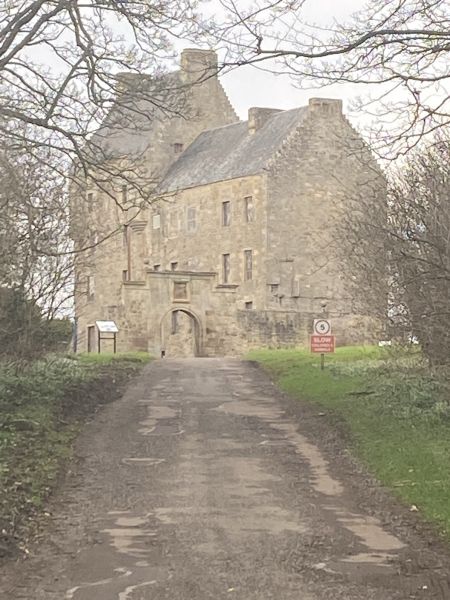 |
||
| Midhope Castle is a 15th century 5-story tower house. It has changed ownership many times over the years, having been passed down through the Drummond family heirs prior to being purchased by the Livingstons. During this time, many structural changes and additions were built. In 1678, it was acquired by John Hope, and many more updates were added, one of key note to Outlander fans includes the doorway and the courtyard. There are now plans to turn the grounds into a whiskey distillery. | ||
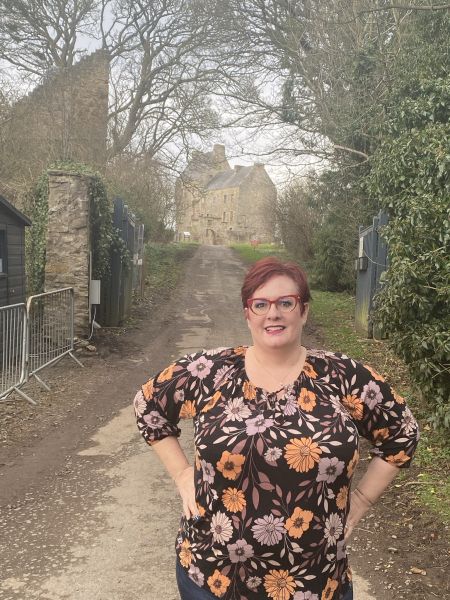 |
||
| Midhope Castle was also closed to the public, so we didn't get a chance to get any good close-up pictures. This was disappointing to Steffanie, as this is another Outlander filming location she had her heart set on visiting. On the show, this is Lallybroch, the home of James Fraser. The area is private and does have residents who live on the grounds. So out of respect, we were asked to remain outside of the gates. | ||
| Blackness Castle | ||
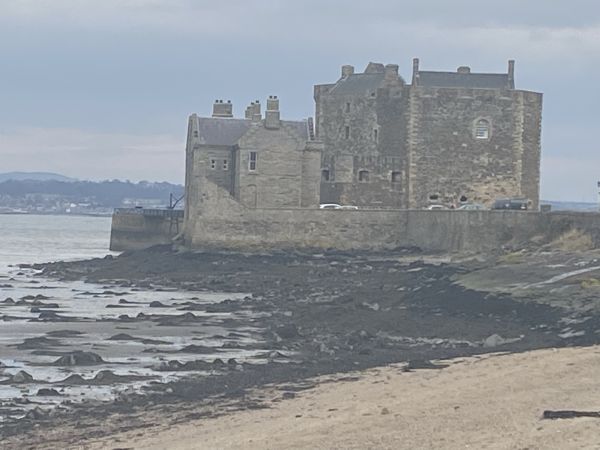 |
||
| Our final attraction on our trip was a visit to Blackness Castle. Built on the site of an earlier fort, this 15th century castle was one of the most advanced artillery fortresses of its time. Built by the Crichtons, one of Scotland's most powerful families, the castle was referred to as the "ship that never sailed", due to its ship-shaped resemblance. The castle served many purposes such as a prison, armaments depot, as well as a royal residence. Jutting out to the Firth of Forth (narrow inlet that flows to the North Sea), you get a nice view of the Queensferry Crossing Bridge. | ||
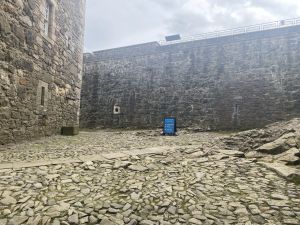 |
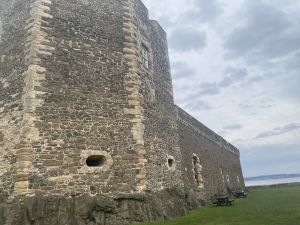 |
|
| This castle was used as Fort William in Outlander season 1. The picture at left shows the courtyard where Jamie took his lashings from Captain (Black Jack) Randall, and also where his father died. The picture at right shows the wall that Jamie and Claire ran across (when Jamie broke into the castle to rescue Claire) before jumping into the water. Clearly there's no water over this wall, but that's how the scene was depicted. | ||
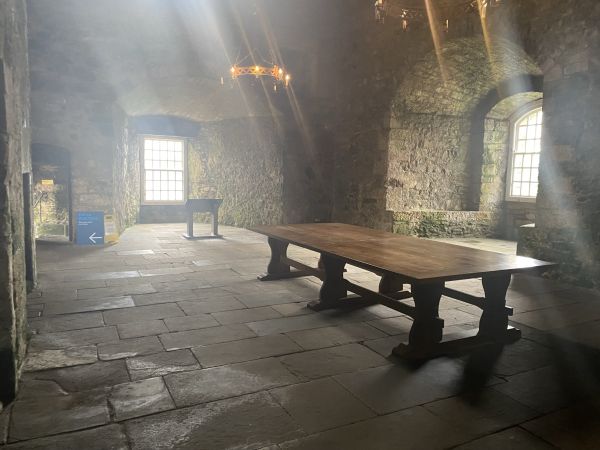 |
||
| I was thrilled that we were able to go inside this castle. When Steffanie and I went to Ireland, we had more opportunities to see the authenticity of the old castles. But up to this point, we hadn't had much of a chance because some were closed for upkeep. I wanted the boys to have the experience of taking in the "oldness" of one of these places. Thankfully, this place was open and the boys were able to stretch their legs and explore. | ||
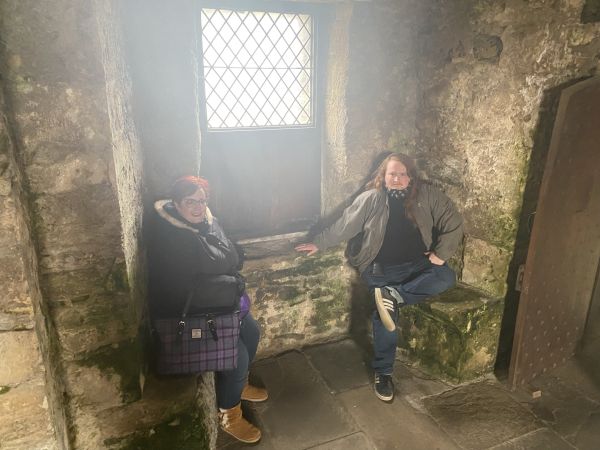 |
||
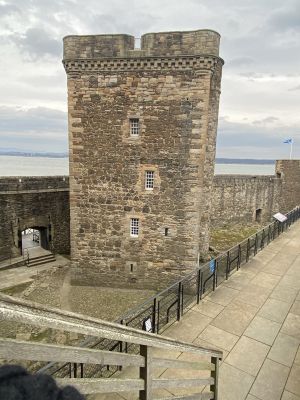 |
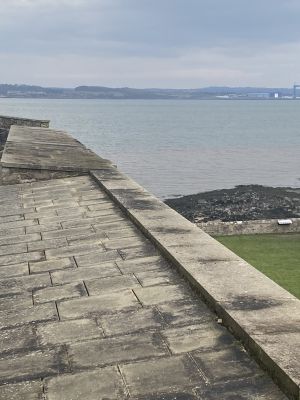 |
|
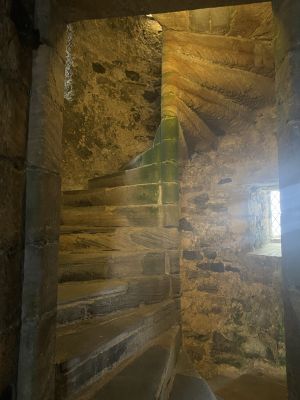 |
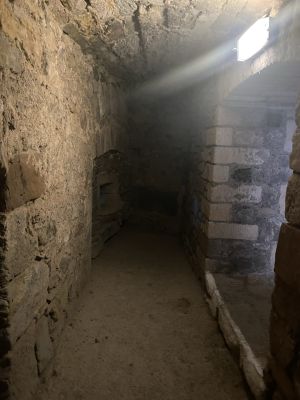 |
|
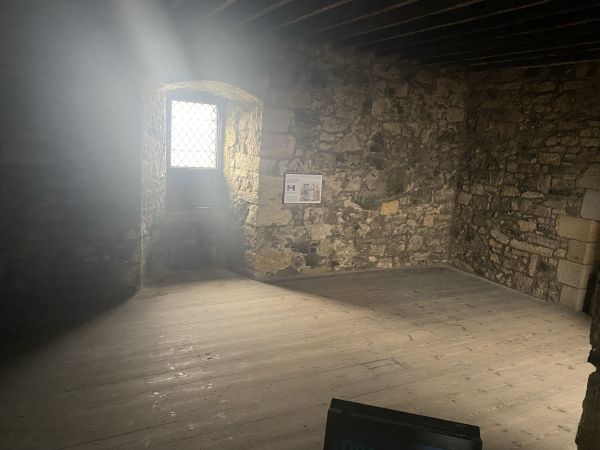 |
||
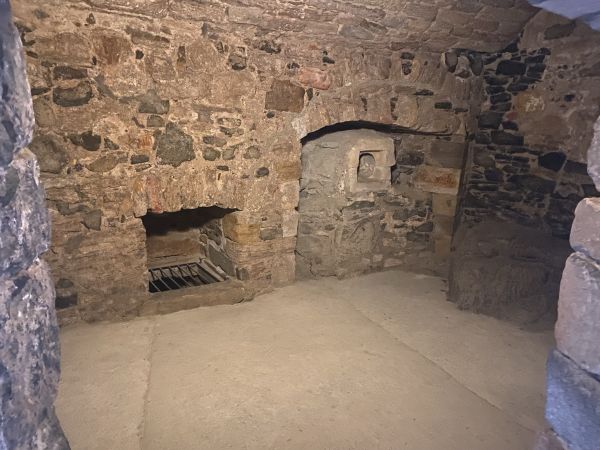 |
||
 |
||
 |
||